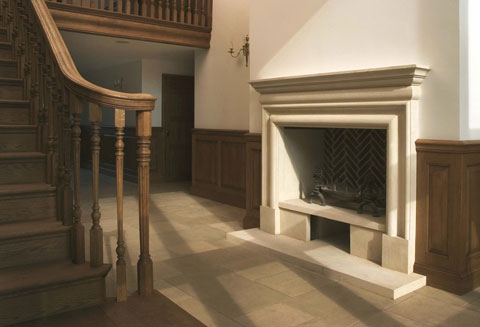
The History Of A Fireplace
28 Mar 2014A fireplace is an architectural structure designed to contain a fire. Fireplaces are used at the present time mostly for the relaxing ambiance they create. Historically they were used for the practical purposes of heating, cooking, and heating water for laundry and domestic uses.
Ancient fire pits were sometimes built in the ground, within caves, or in the center of a hut or dwelling.
Fire pits developed into raised hearths in buildings, but venting smoke depended on open windows or holes in roofs. The medieval great hall typically had a centrally located hearth, where an open fire burned with the smoke rising to the vent in the roof.
Chimneys were invented in northern Europe in the 11th or 12th centuries and largely fixed the problem of fumes, more reliably venting smoke outside. They made it possible to give the fireplace a draft, and also made it possible to put fireplaces in multiple rooms in buildings conveniently. They did not come into general use immediately, however, as they were expensive to build and maintain.
Over time the design of fireplaces has changed from one of necessity to one of visual interest. Early ones were more fire pits than modern fireplaces. They were used for warmth on cold days and nights, as well as for cooking. They also served as a gathering place within the home. These fire pits were usually centered within a room, allowing more people to gather around it.
By the 1800s most new fireplaces were made up of two parts, the surround and the insert. The surround consisted of the mantlepiece and sides supports, usually in wood, marble or granite. As well as providing heat, the fireplaces of the Victorian era were thought to add a cozy ambiance to homes.
The above Bolection Bath stone fireplace was hand carved and installed by Pinckney Green Stoneworks for a Queen Ann house in Hampshire.


